Today Canada celebrates its flag, the red and white Maple Leaf.
It is also one of the youngest flags having been officially raised for the first time in a chilly ceremony in front of Canada’s Parliament, on February 15, 1965. (see below). And yet it has become one of the most easily recognized flags in the world.
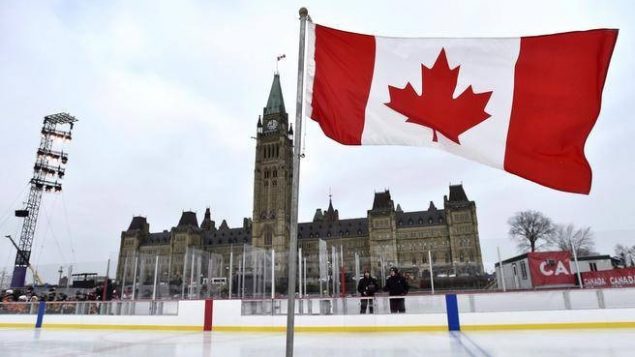
Feb. 2018: Canada’s flag on the ice rink in front of Parliament, Ottawa. One of the most recognized national flags in the world
PHOTO : Justin Tang- CP
Many Canadians don’t realize that since Canada’s beginning as a country in 1867, we never really had an “official” flag.
While the British Royal Union flag was often used, and then later a Canadianized version of the British Red Ensign, neither were actually the official flags.
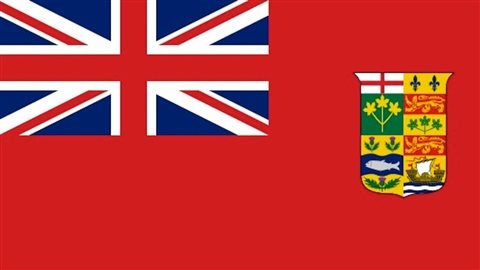
Canada’s “unofficial” Red Ensign 1873 – 1921, with the symbols of each province added through the years as new provinces joined Confederation. It began to get cluttered and confusing, with the then 9 provinces of the Dominion.. Some versions also had the shield within a white disc as well.
While the debate on creating an official flag, came and went through the decades, it was only with the approach of Canada’s centennial year of 1967, that the issue became a priority.

The 1921 simplified Red Ensign, a semi-official flag of Canada, allowed to be flown on government buildings abroad. The shield represented the founding nations of England, Scotland, Ireland and France. The 1957 version removed the female aspects of the harp, and the leaves were changed from green to red., although it remained only a semi-official flag.
As that date approached, the Liberal government declared that Canada should finally have an official flag and distinctive to Canada. Contests were held for ideas for our national flag. Literally thousands of suggestions were sent to Ottawa, most ranging from the bizarre to downright weird and submitted to an all-party committee which would decide.
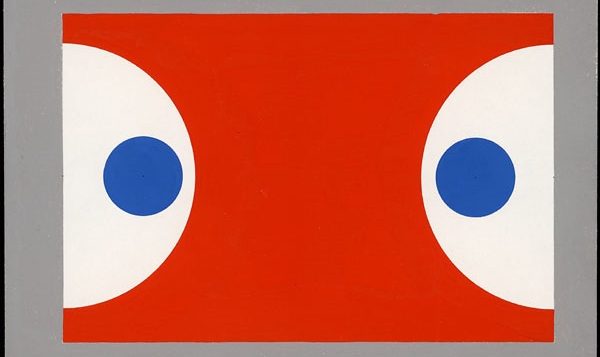
One of the thousands of submitted proposals for Canada’s flag. It didn’t make the cut.
The Maple Leaf theme however cropped up again and again.
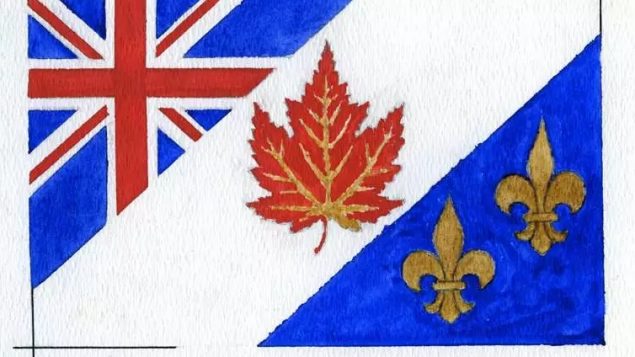
Another idea gave a nod to Canada’s British and French heritage with the Union Flag, and the Fleur de Lys, with a maple leaf in the middle. It also didn’t get far in the debate PHOTO Archives and Special collections, University of Saskatchewan
The song, the Maple Leaf Forever, had long been a contender as Canada’s national anthem, the Maple Leaf was and early symbol for Canada on sports uniforms in international competitions, and many Canadian units in the First World War, had the symbol as their cap badge.
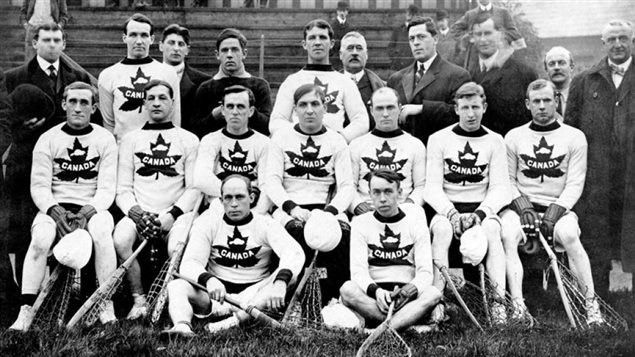
Even as early as Canada itself, the maple leaf and beaver were recognized symbols of Canada. Here, the Canadian lacrosse team at the London Olympics in 1908 with the Maple Leaf (and inset beaver) symbols as background to the word Canada. The maple leaf had already long been a symbol of Canada at international sports events. © Canadian Olympic Committee
However when a committee began whittling down the possibilities, the debate in Parliament became agitated, then downright bitter. Many veterans and serving military personnel were strongly in favour of naming the Red Ensign as the official flag, and some continue to think the Red Ensign should have been chosen. Versions have bee retained as official provincial flags of Manitoba and Ontario, each with their provincial shield in the fly.
The Conservative Party under John Diefenbaker vehemently defended their choice also to retain the Red Ensign.
Then Prime Minister Lester Pearson’s personal choice was three red leaves on a white background with blue borders, but Canada’s official colours were only red and white. In the end the all-party committee settled the debate once and for all with the choice of the single red leaf with two red borders.
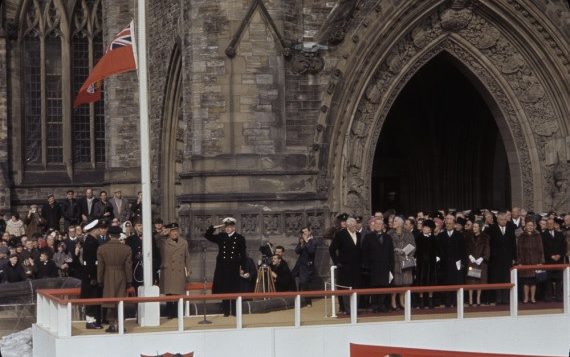
Just before noon the then semi-official 1967 version of the Red Ensign was lowered on Parliament Hill, PHOTO Library and Archives Canada
Then Prime Minister Lester Pearson, ended the long debate and declared the design of the new flag to be final.
The simple design, using Canada’s official colours of red and white is now proudly flown and worn wherever Canadians go.
Less than a week ago, we cheered on our Canadian athletes as they marched together proudly behind the Canadian flag at the opening ceremony of the Olympic Winter Games PyeongChang 2018.
Today, as we continue to witness Team Canada’s successes, we celebrate the 53rd anniversary of our flag. Selected in 1964, the red and white design with the image of the 11-pointed red maple leaf at its heart made its first official appearance 53 years ago today, and quickly became one of the most recognizable and respected national symbols in the world.
Our flag represents the very best of Canada and all Canadians. Like our Olympic and Paralympic athletes, it stands as a symbol of honour, perseverance and courage. As Canadians come together across the country and around the world to cheer on our athletes,
I encourage you to celebrate this special day and post a selfie with the flag on social media with #Canadianflag.
Film of the raising of Canada’s official flag, Feb 15, 1965







For reasons beyond our control, and for an undetermined period of time, our comment section is now closed. However, our social networks remain open to your contributions.